One of the unexpected joys of my 1THING: Plug In series is the discovery of new ideas and techniques that I can instantly apply to my own home- and the affirmation that some of the solutions that have evolved naturally over time in my home make some sense after all. This post has both.
In my recent post on new build media rooms I outlined a dark zone between the viewer and the screen and a not-quite-as-dark zone behind the viewer to reduce glare- if you have a glossy screen. I happen to have a pull-down screen and projector in my living room as our main television, which has a matte surface instead of the glossy surface found on most flat screen televisions. This mitigates the glare, though the lower brightness of the projector does require a pretty dark setting for optimal viewing.
In both cases, lamps with traditional fabric shades let light out directly towards the screen, potentially causing glare or washing out the picture. While these lamps are perfect for living rooms, in media rooms where screen watching is a must, they need to be carefully placed or turned off during viewing. But a dark room is not particularly comfortable, so what else can you do if you do not want to hire an electrician?

If media watching is the main purpose of the room, you could consider dark shades made of either dark fabric or even metal. Dark shades will reduce the glare in the screen considerably while still casting light on the floor (which I call the safety zone) and on the ceiling (to help you move around). I do not happen to like dark shades, so I kept looking.
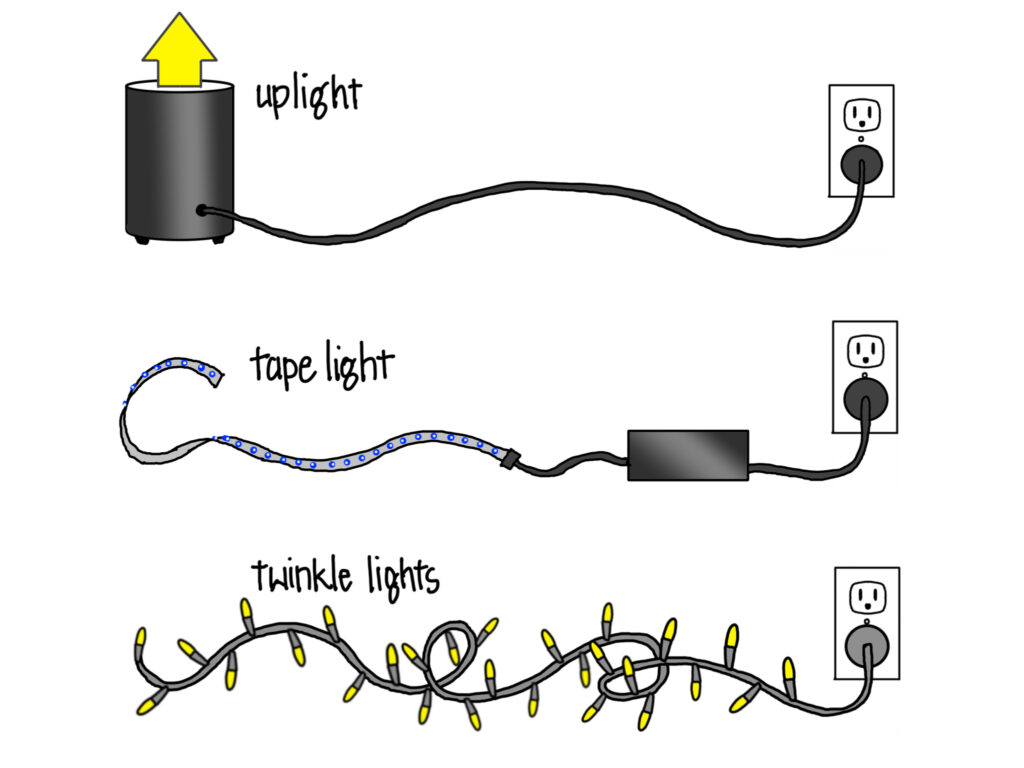
Fortunately, there are many types of plug-in light sources you can put to use in media rooms, especially for soft glowing light that makes it feel comfortable and safe. Plug-in uplights are super-cheap and can be outfitted with regular light bulbs or color-changing smart bulbs for added effect. There are countless linear LED “tape light” kits on the market, many with color changing capability and remote controls. And never overlook twinkle-lights, the ubiquitous strings of tiny lights that sparkle all year long, no longer restricted to holiday use.
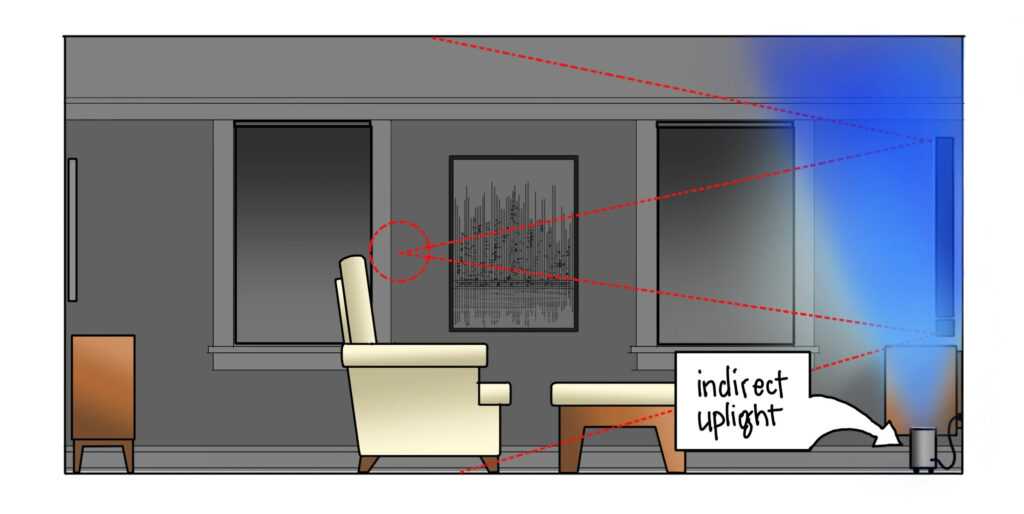
Uplights can be placed on the floor or on furniture like side tables and entertainment consoles. I like to hide mine in the corners of rooms, like behind the couch or chair. We even have one behind a wood-burning stove to give off a nice glow all year long. In the case of a media room, this might be a good place to put in some color-changing light so you can set it to a nice blue light. This can evoke a relaxing atmosphere and be less distracting from the screen. If you are using a glossy screen, try to locate one or two of these to the left and right of the television, avoiding behind you where it will reflect in the screen. I do not have one of these in my living room, but writing this post makes me wonder about one behind the recliner….
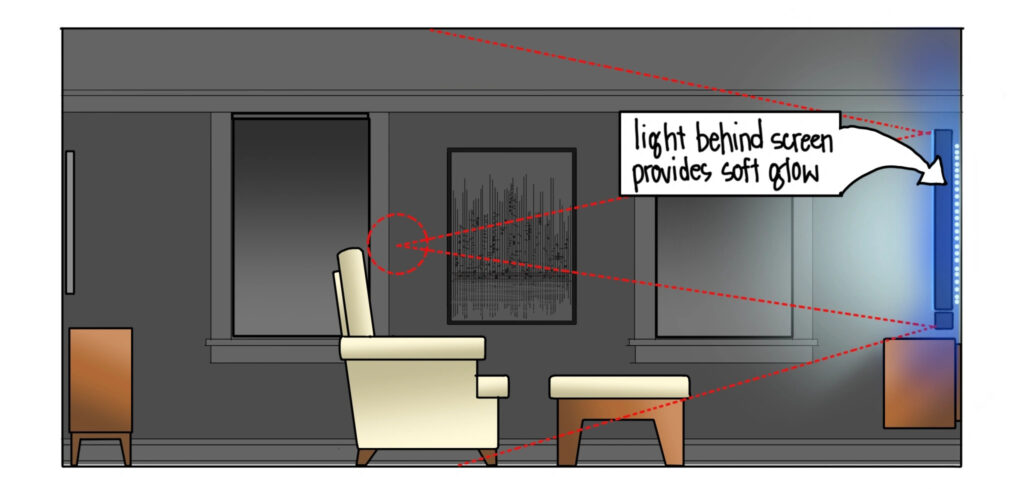
Often called “bias lighting,” a strip of light behind the screen itself lowers the contrast ratio of task to adjacent, which is lighting-geek-speak for making it easier on your irises to adjust to the screen. A bright screen on a black background means your eyes are constantly in tension between the dark space and the bright screen. Bias lighting eases the strain and can be more comfortable in relaxed viewing environment. (Bias lighting may be distracting in a theater, where the screen is typically much larger and the content the main focus of the room) Again, I like deeper blues as a background color, like the sky just before it gets dark. I added this effect behind the bookshelves that act as a media console, holding the stereo and speakers. The effect is very subtle – I often forget that it is on- but the comfort is real.
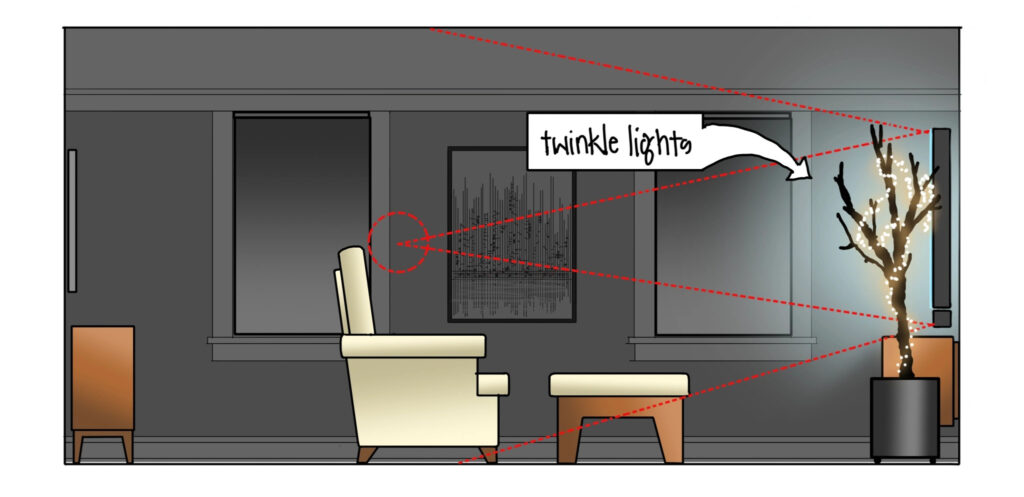
Ah, twinkle lights. Seriously, I could spend the rest of my life developing variations of string lights and new uses. There are few lighting effects as magical as a Christmas tree with a thousand tiny warm lights. One year we were frustrated by the darkness at dinner following the time change and we hung up a string in our dining room on a whim. They are still there.
String lights can also give a soft comforting glow in a room that is not distracting from the screen. Once a week we sit down with the kids and have pizza in front of a movie; some tiny string lights on birch branches in the corner of the room are part of the atmosphere that makes it comfortable to eat and watch. Putting them in the room for media-watching was not intentional, but they just work. So why not?
Your television will give off a glow most of the time, but a few plug-in solutions will help you feel comfortable in the darker moments of watching media. As a bonus, they might make it more comfortable for everything you do in the room – reading, relaxing, playing games, or talking. Good lighting often checks multiple boxes at once.
Now stop reading and go get some string lights….
And one more thing…
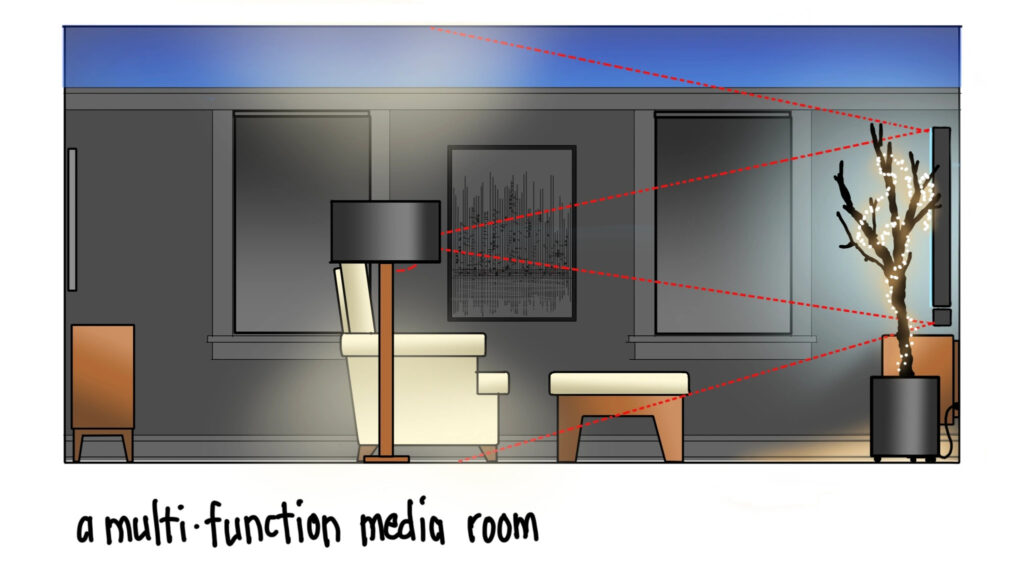
The risk of writing a series of 1THING posts is that you might miss the value of layered lighting, which is where really good lighting happens. In this case, a combination of the New Build and Plug In posts could result in a great media room experience – indirect color-changing cove light, lamps with dark shades, twinkle lights or corner uplights, and a soft glow on the floor for moving around. Ah, that’s better….
